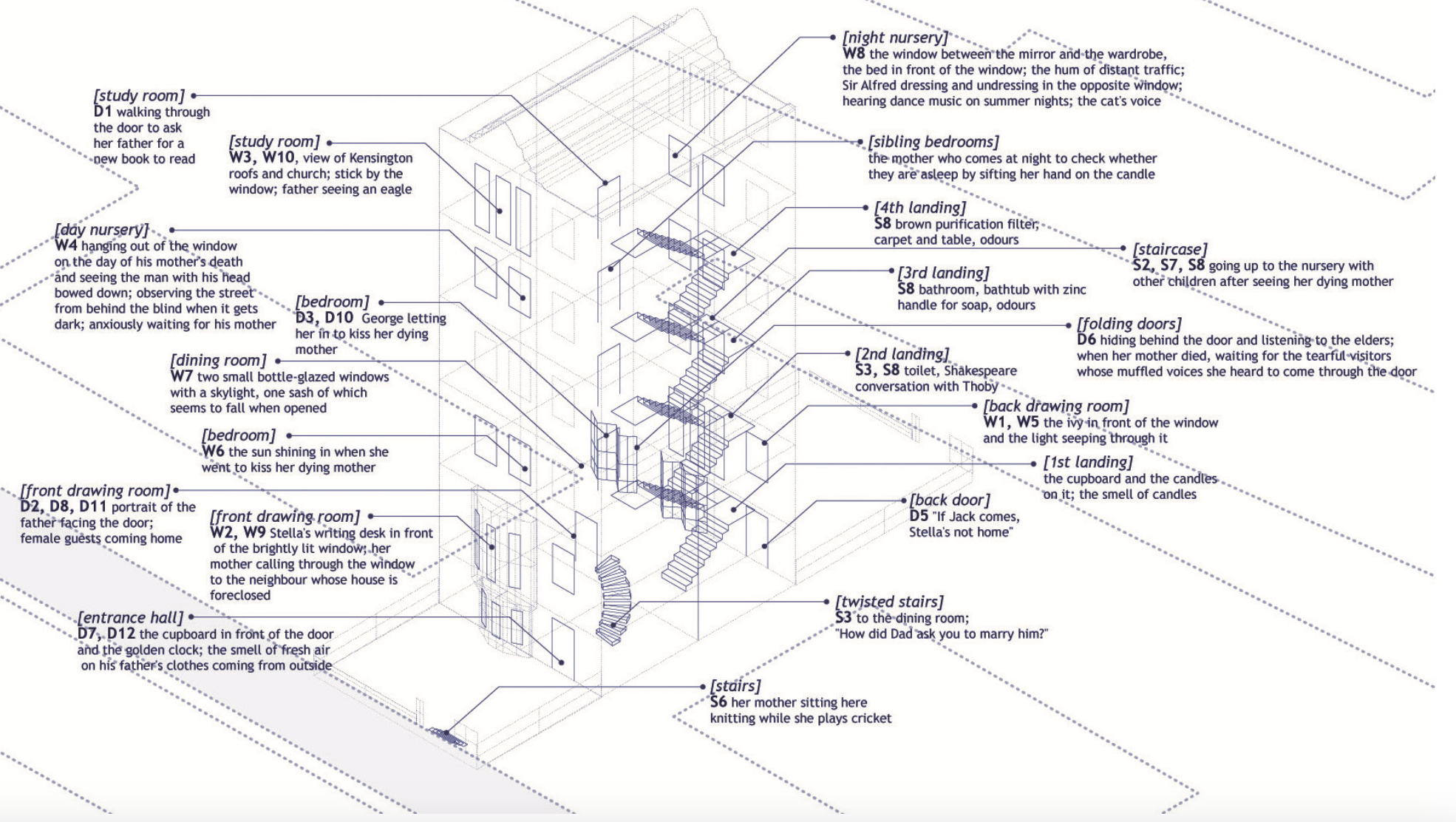Wandering Virginia Woolf’s Home through Spatial Correlators of Autobiographical Memory
A Sketch of the Past
Abstract
This research is based on the argument that architecture, specifically some building elements, have effects of different qualities on the establishment of spatial memory. In this article, it is searched for the ways in which spaces urge movements and create spatial situations through certain building elements such as doors, windows, and staircases. Drawing on theories of memory and perception, it is suggested that the spatial situations provided by building elements play a significant role in the recollection of spaces in the autobiography. For exploring how the narratives of these building elements in literature may provide insights into the relations between memory and space, as a case study, it is resorted to an autobiographical memoir, named ‘A sketch of the past’ (1985) by Virginia Woolf written in 1939. The case study seeks the spatial correlators of autobiographical memory by framing a discussion on the co-functioning of memory, perception and experience. The text is deconstructed to explore how the establishment of space occurs through spatial situations. The findings are then evaluated through philosophy and theories of psychology on autobiographical memory. The transcribed spatial situations and remembered experiences engraved on the hypothetically constructed isometric drawing of Woolf’s childhood home, Hyde Park Gate 22, London and the qualities of spatial correlators in action are evaluated.
Downloads

Downloads
Published
How to Cite
Issue
Section
License
Copyright (c) 2025 Elif Cemre Çelikcan, Aslıhan Şenel

This work is licensed under a Creative Commons Attribution 4.0 International License.
The authors keep their rights upon their work, although they transfer, in a non-exclusive way, the rights of exploitation (reproduction, publication, distribution, public dissemination and presentation) to the Journal. The authors are, therefore, free to enter additional, separate contracts for the non-exclusive distribution of the version of the work published in the Journal (for instance, by hosting in an institutional repository or publication in a book), provided credit is given that the work was initially published in this journal. The works are published under a Creative Commons Attribution 4.0 (CC BY 4.0) license.











